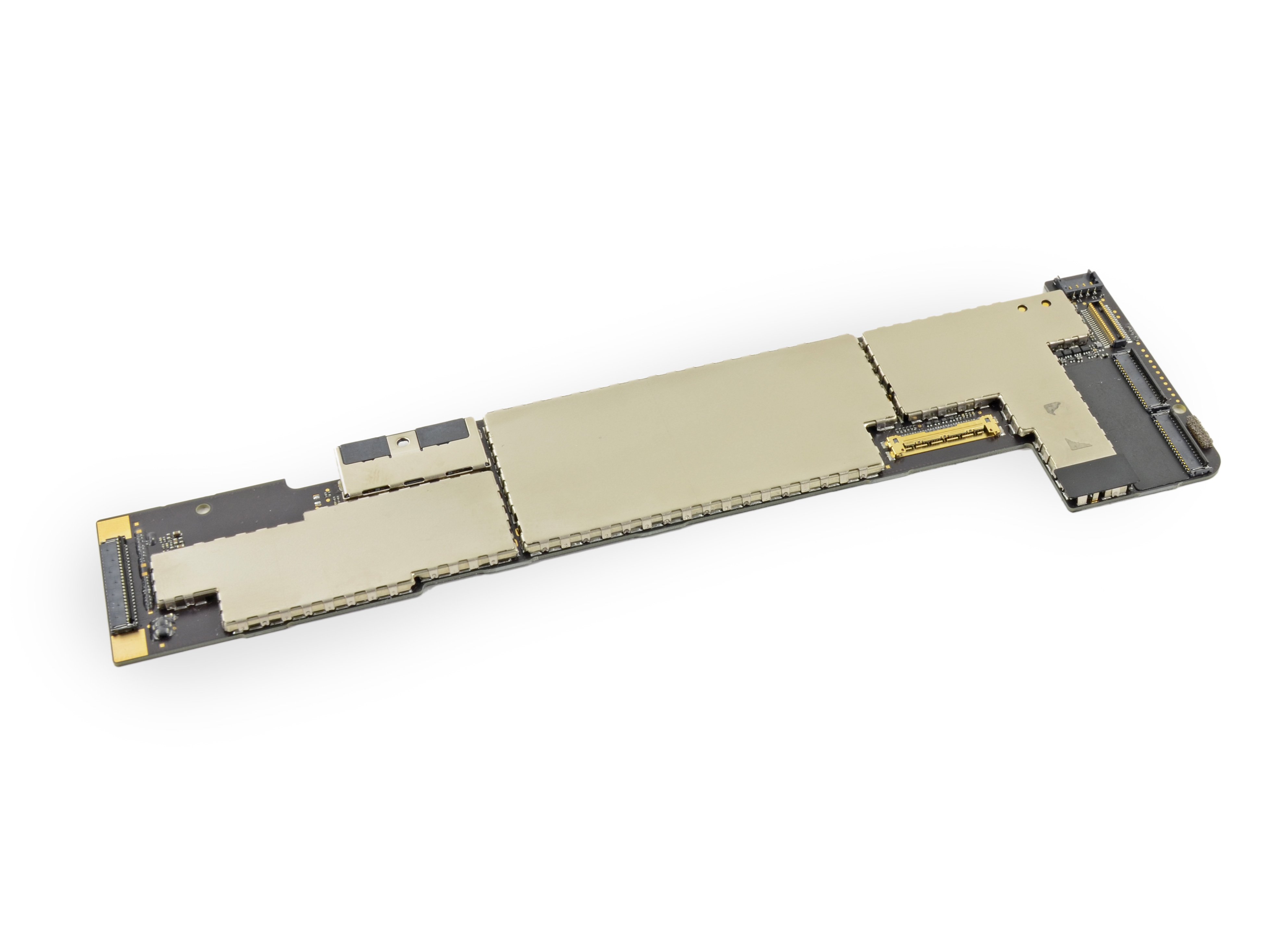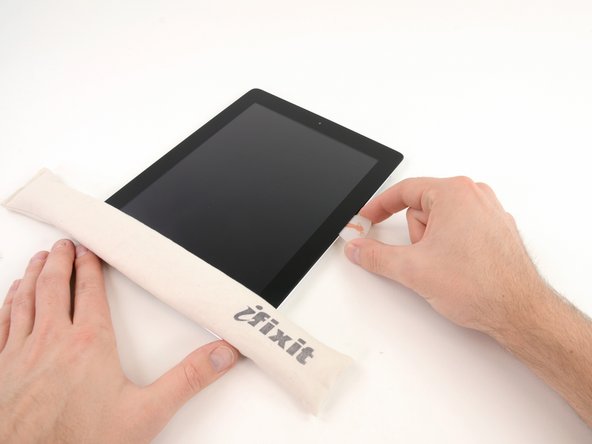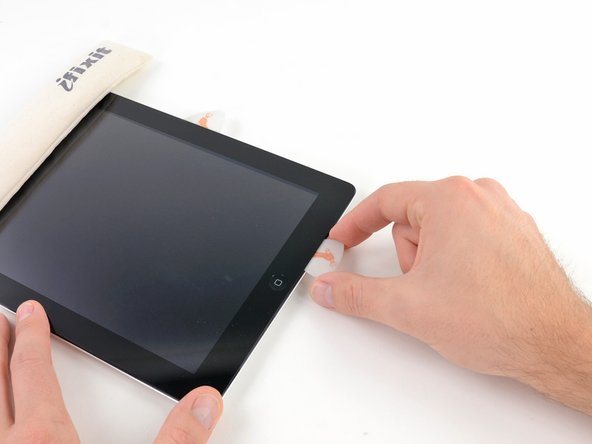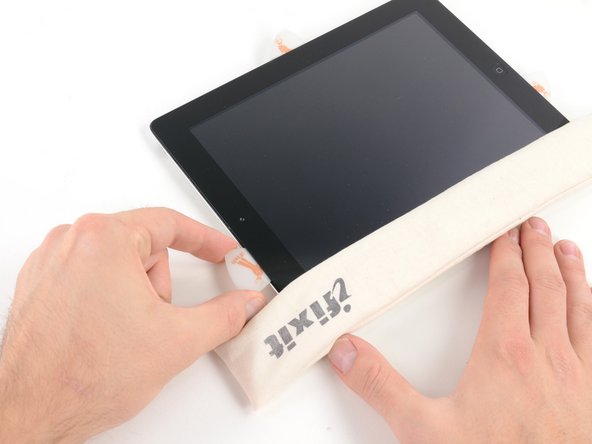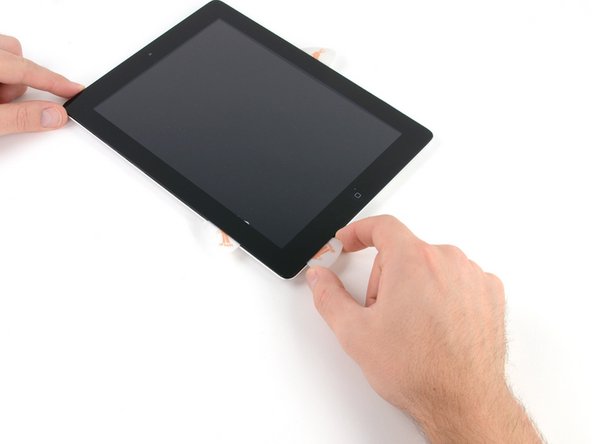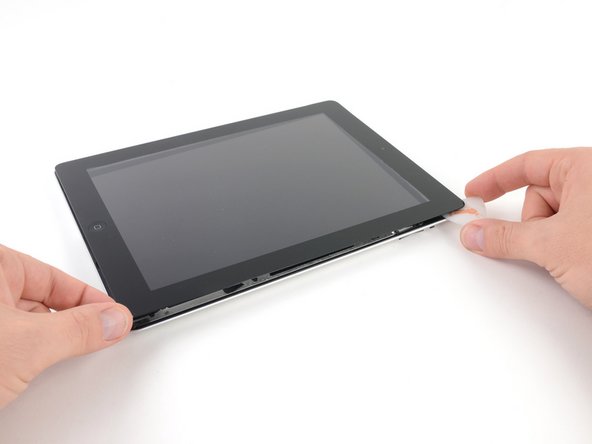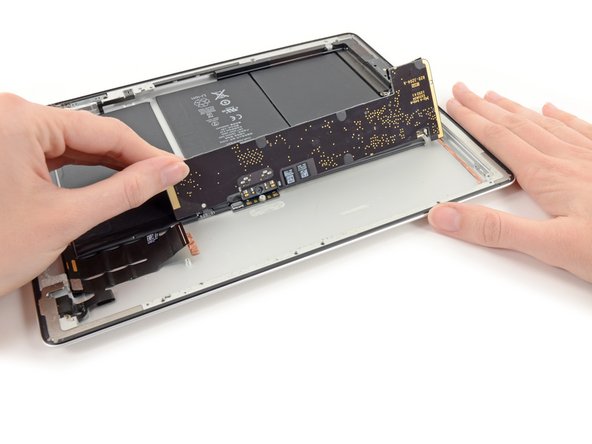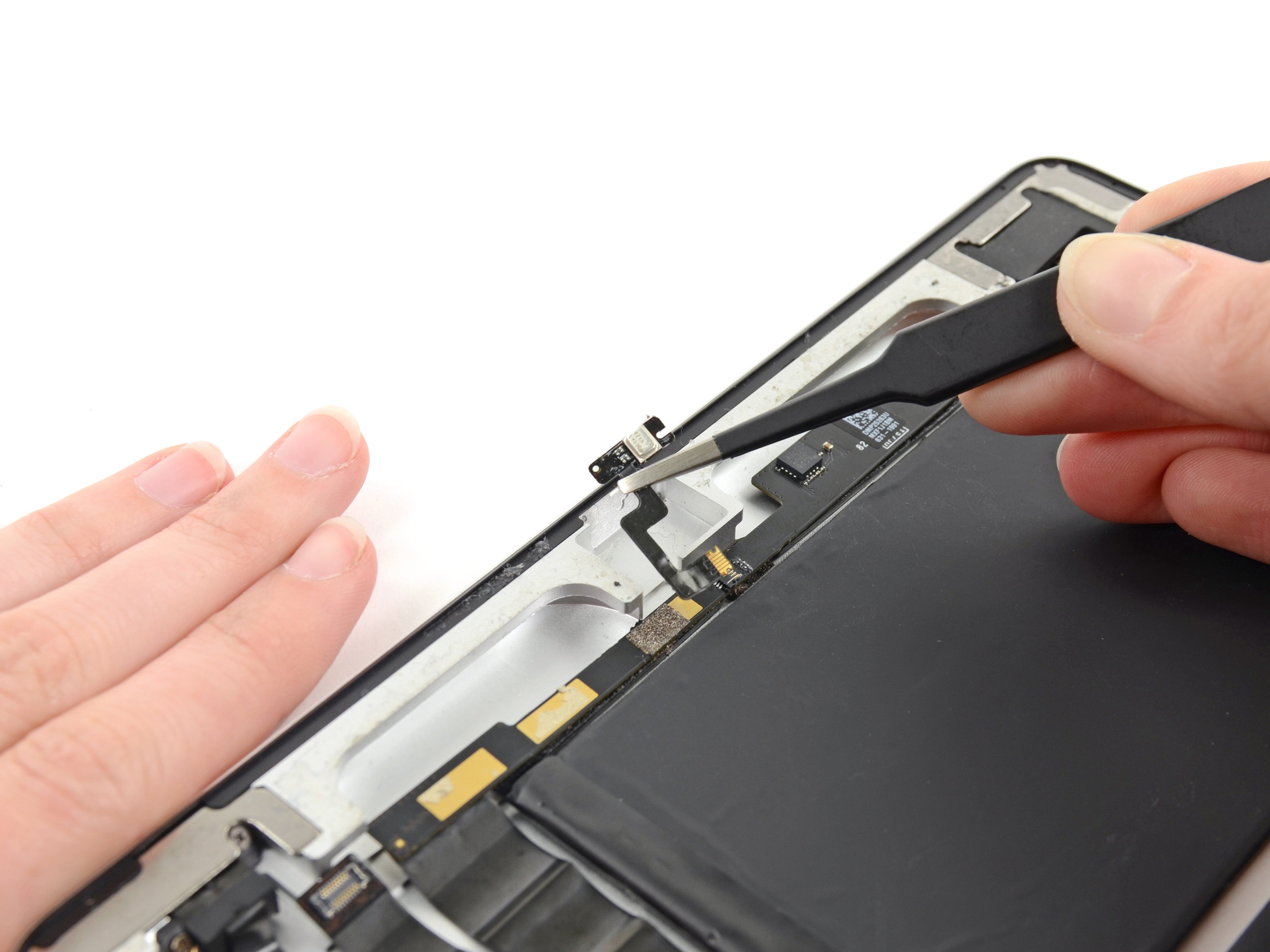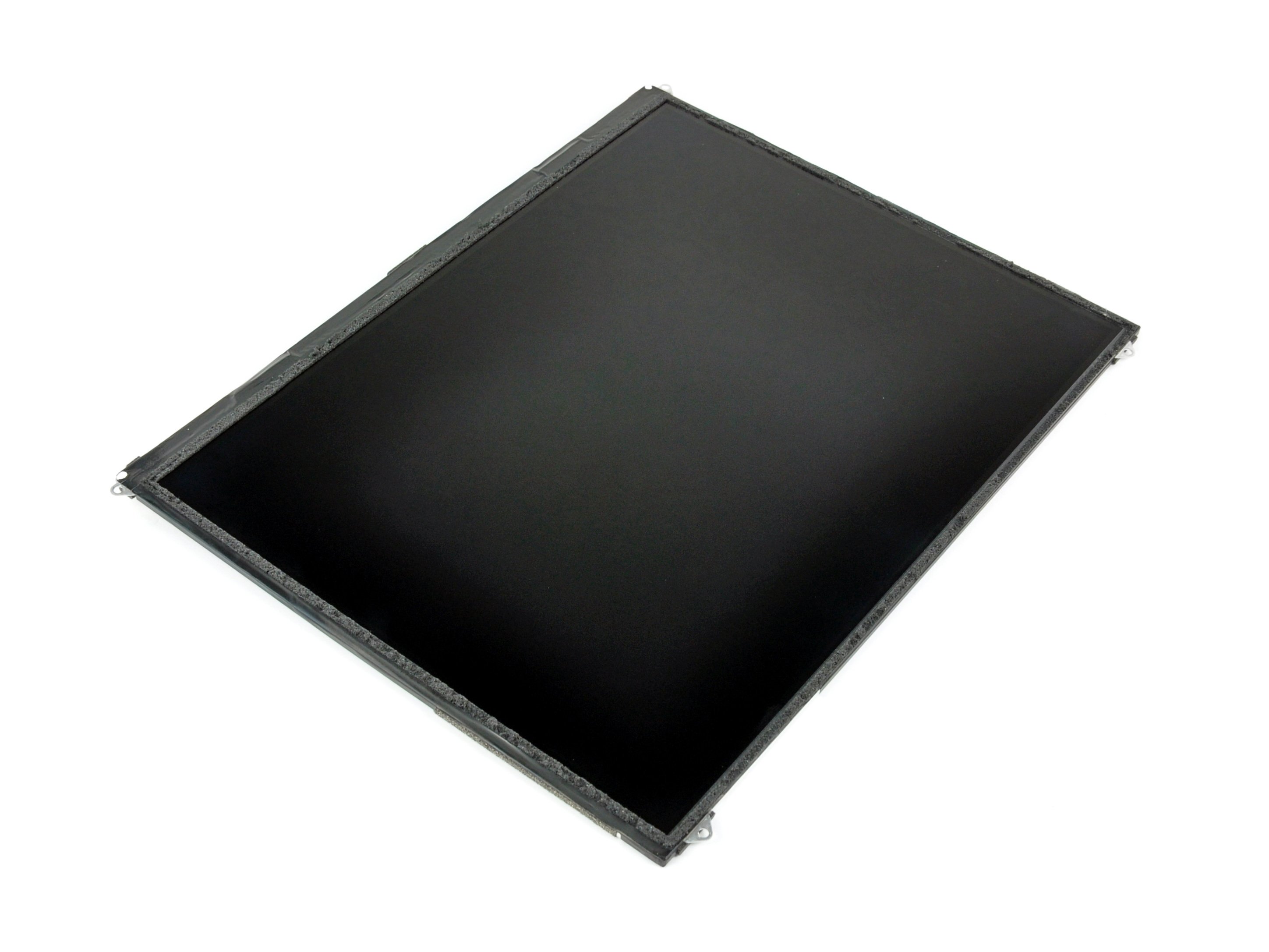iPad 2 Wi-Fi EMC 2560 Logic Board Replacement
Duration: 45 minutes
Steps: 46 Steps
Get ready to swap out that logic board! With a bit of patience and care, you'll have your device back in action before you know it. If things get tricky, remember, you can always schedule a repair!
Step 1
For carousel microwaves: Double-check that the plate spins without a hitch. If your iOpener gets stuck, it might overheat and cause a burn—no one wants that!
It's a great idea to give your microwave a little TLC before diving in, as any leftover gunk on the bottom might just hitch a ride on the iOpener. Trust us, a clean start makes for a smoother repair journey!
- Pop the iOpener right in the middle of the microwave to get it warmed up and ready to go.
Tools Used
Step 2
Keep an eye on your iOpener—don't let it get too hot during the repair! If it overheats, it could pop, and nobody wants that. Aim to keep it under 100˚C (212˚F).
If your iOpener looks a little puffy, steer clear! Safety first, friends.
If the middle of the iOpener is still too toasty to handle, hang tight and let it chill a bit before you warm it up again. A well-heated iOpener can keep the good vibes for about 10 minutes!
Microwave wattage can change how long you need to heat the iOpener. It’s ready to roll when it feels just a tad too hot to handle—perfectly toasty, not oven-burnt!
- Give that iOpener a warm hug in the microwave for thirty seconds.
- As you work your magic, keep an eye on the iOpener—when it cools down, pop it back in the microwave for another thirty seconds to keep the good vibes going!
Tools Used
Step 3
Heads up! The iOpener gets seriously hot, so handle with care. If you want to play it safe, grab an oven mitt before you dive in.
- Carefully take the iOpener out of the microwave, grabbing it by one of the flat ends to keep clear of that super hot center. Stay cool and watch those fingers!
Tools Used
Step 4
The iOpener is going to be pretty toasty, so make sure to grab it by the end tabs only. Safety first!
Don't have a microwave? No worries! Just heat up your iOpener in some boiling water instead. You've got this!
- Grab a pot or pan and fill it up with enough water to give your iOpener a nice, cozy bath.
- Turn up the heat and let that water come to a rolling boil. Then, hit the off switch.
- Carefully drop your iOpener into the steamy water for about 2-3 minutes. Make sure it’s completely submerged and enjoying the warmth.
- Using tongs (safety first!), gently lift the warmed iOpener out of the water.
- Give it a good towel dry—no one likes a soggy iOpener!
- And voilà! Your iOpener is all set for action! If it needs another warm-up, just repeat the boiling process for another 2-3 minutes.
Tools Used
Step 5
Put on those safety glasses to keep your peepers safe, and watch out for that LCD screen—it's more fragile than it looks!
This will keep those pesky glass shards contained and help maintain the structure while you're prying and lifting the display.
- If your display glass is cracked, make sure to prevent any more breakage and avoid cutting yourself during the repair by taping the glass up.
- Grab some clear packing tape and lay down overlapping strips over your iPad's screen until it's totally covered.
- Now, follow the guide as usual! Keep in mind that once the glass is cracked, it might keep breaking as you work. You might need a metal prying tool to carefully scoop the glass out. If you run into trouble, don't hesitate to schedule a repair.
Step 6
Hey there! Just a quick heads-up: while you're tackling this repair, you might come across some broken glass. To keep those peepers safe from any pesky shards flying around, we highly suggest rocking a pair of safety glasses. Better safe than sorry, right?
- Place the iOpener flat against the right edge of your iPad, giving it a little love tap to ensure it’s making solid contact with the surface.
- Let the bag chill on the iPad for around 90 seconds before you dive into opening the front panel.
Tools Used
Step 7
Getting that opening tool tip between the glass and plastic might take a little muscle. Stay patient and keep it wiggling gently back and forth—think of it as coaxing the device to open up for you!
- There’s a tiny gap in the iPad’s adhesive ring at the upper right corner, about 2.0 inches (~5 cm) down from the top edge. This little gap is your secret entry point.
- Line up your tool with the mute button. Gently slip the tip of a plastic opening tool into the crack between the front glass and the plastic bezel. Just nudge the tip in just enough to start widening that gap.
Step 8
- Be sure to position the tool just right—nestled between the plastic display bezel and the front panel glass. You've got this!
Step 9
- Gently tuck the tip of your plastic opening tool between the front glass and plastic bezel, then slide a plastic opening pick right next to it to carefully work the gap open.
Step 10
- Slide the plastic opening tool out from the iPad, then gently nudge the opening pick a bit deeper under the front glass—about half an inch should do the trick.
Step 11
- As you gently loosen the adhesive on the right side of the iPad, go ahead and warm up the iOpener again, then place it back along the bottom edge to keep things nice and toasty.
Tools Used
Step 12
The adhesive is super tough, so you might need to bring out some serious muscle. Take it slow and steady!
If you can spot the tip of that opening pick peeking out from under the front glass, give it a gentle tug. Don't worry, using the pick this deep won't cause any harm, but it might leave some sticky adhesive marks on the LCD. Just a little heads up!
- As the iOpener warms up the bottom edge, start loosening the adhesive along the right side of your iPad.
- Gently slide the opening pick down the edge, carefully freeing the adhesive as you go.
Tools Used
Step 13
You might need to slide the heated iOpener back over to the right edge of the iPad while you peel off the adhesive. How long the iPad has had to cool off during your work will decide if this move is needed.
- If your opening pick is feeling a bit stuck in the adhesive, just give it a gentle 'roll' along the side of the iPad. Keep it moving to help loosen up that sticky stuff!
Tools Used
Step 14
- Before you pop that first opening pick out from the bottom corner of your iPad, sneak a second pick under the right edge of the front glass to stop the adhesive from getting all clingy again.
- Give your iOpener another heat-up, and move it to the top edge of your iPad for a little extra love.
Tools Used
Step 15
Heads up! The Wi-Fi antenna is chilling at the bottom right edge of your iPad’s back case, secured with screws and a cable. Since it likes to stay oriented just so, take it slow and steady—one wrong move and the antenna could be toast. Stay cool and proceed carefully!
- Alright, here comes the tricky part. Proceed with care and keep your focus.
- Now, you’ll need to gently release the adhesive that’s holding the antenna to the front panel. Be extra careful not to damage the delicate components connecting the antenna to the iPad’s bottom. Take your time with these next steps, and if things get too tricky, don't hesitate to schedule a repair.
Step 16
Hey there! Just a friendly reminder—don't slide that pick past the bottom right corner. You wouldn't want to accidentally mess up the Wi-Fi antenna, would you? Keep it cool and steady!
- Gently slide the opening pick around the bottom right corner of the iPad to loosen the adhesive hiding there.
Step 17
Careful now! Glide your opening pick along the bottom right edge of the front panel. The Wi-Fi antenna is hanging out close to the corner and could get cut if you’re too rough with the adhesive. Take it slow and steady!
Don't fully pull the pick out from under the front glass—just slide it out a bit so about 1/8" (3 mm) of the tip stays tucked underneath. Keep it steady, you're doing great!
- Gently slide the tip of your opening pick along the bottom edge of the iPad to loosen the adhesive around the Wi-Fi antenna. Keep it smooth and steady!
Step 18
- After you’ve slid past the Wi-Fi antenna (around 3" or 75 mm from the right edge, just beside the home button), push the opening pick all the way in.
- Gently glide the pick to the right to loosen the adhesive holding the Wi-Fi antenna to the front glass.
- The antenna is screwed and cabled to the bottom of the iPad. This step carefully frees the antenna from the front panel so you can remove the panel without causing any damage.
Step 19
Keep your iOpener chill by heating it for no more than a minute at a time, then let it cool off for at least two minutes before giving it another round.
If the adhesive has cooled down too much along the bottom edge, give the iOpener a little extra love and heat it up again to warm up that sticky stuff where you're working.
- Keep sliding the opening pick along the bottom edge of the iPad, carefully pulling it out enough to curve around the home button, then pop it back in about half an inch (10 mm) once you’ve passed the button. Easy does it!
Tools Used
Step 20
For iPad 4 models, be sure to gently slide the pick in no deeper than 1/2 inch (10 mm) in this spot—it's crucial to steer clear of that home button ribbon cable to keep things functioning smoothly!
- Keep peeling away the adhesive along the bottom edge of the iPad like you're unwrapping a present. It's almost there!
- Slide the opening pick in and let it rest under the front glass by the home button. It's your little helper for the next steps!
Step 21
- Pop the iOpener into the microwave to warm it up, then place it on the left edge of your iPad. Let it work its magic by softening the adhesive in that section.
Tools Used
Step 22
If the adhesive has cooled down too much, pop the iOpener back along the top edge and keep going. If your iOpener is feeling chilly, just give it another quick heat-up and you’re good to go.
- Slide the opening pick along the top edge of your iPad, gently pulling it out to glide around the front-facing camera bracket.
- This section has a pretty thick adhesive, so it might take a bit of elbow grease. Go slow, stay steady, and avoid any slips that could damage your device or yourself.
- If the pick gets stuck in the adhesive, give it a little roll like shown in step 9. That should help it slide right through.
Tools Used
Step 23
If your adhesive is feeling nice and toasty, go ahead and take that iOpener off the iPad for a bit of ease. But if you find it’s still sticking like it’s got a serious case of the cling-ons, just give the iOpener another quick heat-up and rest it on the left edge while you tackle the task at hand.
- Keep on peeling back that adhesive along the top edge of the iPad, and gently slide the opening pick around that top left corner like a pro!
Tools Used
Step 24
The digitizer cable is hanging out around 2 inches (50 mm) from the bottom of your iPad. When you're about 2.25 inches (60 mm) away from the bottom, it's time to pause your pick sliding adventure!
- Gently slide the opening pick along the left edge of the iPad, carefully loosening the adhesive as you go. The adhesive is pretty thin here because of the digitizer running along the entire left side. Keep the pick shallow—no deeper than about 10 mm (half an inch)—to avoid any accidental damage to the digitizer.
Step 25
The digitizer cable is pretty close to the bottom of the iPad—about 1 inch (25 mm). Take your time and be gentle, you don’t want to accidentally cut it. Slow and steady wins this race!
- With your trusty opening pick still nestled under the bottom edge of your iPad, gently coax the adhesive loose from the bottom left corner. You're doing great!
Step 26
Some of the adhesive around the edges of the iPad might have decided to stick back down. If that’s the case, carefully slide a pick under the part where the front glass is still holding tight and gently "cut" through the adhesive to free it.
- Grab one of those nifty opening picks and gently pry up the bottom right corner of your iPad. Once it's lifted, use your fingers to hold onto it like a pro!
Step 27
Watch out for any sticky adhesive that might still be clinging on! Grab your handy opening pick and gently slice through any adhesive that could be keeping that front panel in place.
- Grab your iPad by the top and bottom right corners and gently twist the front glass away from the device. You've got this!
- When putting everything back together, take a moment to use a microfiber cloth and some compressed air to wipe away any pesky dust or fingerprints from the LCD before you reinstall the glass. It'll look so much better!
Step 28
- Unscrew those four 2.0 mm Phillips screws that are holding the LCD tight against the rear case. Let's set that screen free!
Step 29
Handle the LCD with care—don’t try to yank it off just yet since its display data cable is still hanging on while you gently flip it over.
The front panel ribbon cables are snugly tucked under the LCD. To get to them, just flip the LCD over and give it a little breather for a moment.
- Gently lift the LCD from the edge nearest to the volume buttons and smoothly flip it away from the rear case—just like flipping through the pages of your favorite book.
- Now, place the LCD face down on the front panel.
Step 30
Make sure you’re gently prying up on the hinged retaining flaps, not the sockets themselves — they’re delicate!
Check out the second picture for the retaining flaps, marked in red. They're your visual guide to the next step—easy to spot!
- Gently take your trusty plastic opening tool and slide it under the retaining flaps of those two digitizer ribbon cable ZIF sockets. Give them a careful little lift, just like flipping the lid off a fresh snack—easy does it!
Step 31
- Grab your trusty plastic opening tool and gently work its edge under the digitizer cable, peeling it away from the logic board shields.
- Now, carefully lift the digitizer cable off the sticky adhesive that’s holding it onto the side of the rear case.
Step 32
- Gently pull the digitizer ribbon cable straight out of its two sockets on the logic board. A smooth, steady motion is all you need—no need to rush!
Step 33
Take it easy when handling the LCD – don’t try to take it off the iPad just yet. The cable will still be attached while you gently rotate it over.
To get that front panel assembly off, you'll need to carefully slide the ribbon cable out from between the case and the LCD. Just give the LCD a little nudge to create some wiggle room, and you'll be good to go!
- Gently lift the LCD from its farthest edge, away from the digitizer cable, and flip it towards the rear case—kind of like you're closing a book, but without the drama.
- While holding the LCD up, carefully slide the front panel off the iPad. Watch out for the digitizer cable; we don’t want it getting caught on anything!
- Place the LCD back into the body for now, just to keep it safe until you're ready to continue.
Step 34
To dive into the iPad's inner workings, we'll need to gently flip the LCD back out of its cozy case.
- Gently lift the LCD from the long edge nearest to the volume buttons and carefully flip it out of the back case, just like you're turning a page in your favorite book.
- Place the LCD face down on a clean surface. A soft cloth can be a great buddy here to keep it scratch-free and happy.
Step 35
Take care not to yank the connector upwards when you're disconnecting it from its socket. A gentle touch goes a long way!
- Gently pry up the display data cable lock using a plastic opening tool.
- Carefully slide the display data cable straight out of its connector.
Step 36
- Carefully detach the LCD assembly from the back panel assembly.
Step 37
- If there's tape, use your plastic opening tool to gently lift it off the dock connector cable.
- Take your trusty plastic opening tool and carefully wiggle the dock connector cable free from its socket on the logic board. Easy does it!
- Peel the dock connector ribbon cable off the rear panel. Don't rush, take your time!
Step 38
Take care to gently pry just the connector, and steer clear of the socket on the logic board—nobody wants to accidentally turn that little guy into confetti!
- Gently lift the speaker cable connector straight up out of its socket on the logic board like you’re carefully unplugging a tiny plug—no sudden moves!
Step 39
- Let's kick things off by unscrewing those pesky screws!
- Next up, gently detach the metal bracket from the rear case.
- You've got two 2.1 mm Phillips screws holding one of the metal brackets in place—let's loosen those!
- And don't forget about the single 2.6 mm Phillips screw that’s keeping the logic board snug against the rear case. Time to take that one out too!
Step 40
- If you spot it, grab your tweezers and gently lift off the piece of tape covering the end of the headphone jack/control board cable. Easy, right?
Tools Used
Step 41
Remember to gently lift that hinged retaining flap up, not the socket itself. You've got this!
- Gently lift up the retaining flap on the headphone jack/control board cable ZIF socket using the flat end of a spudger. Take your time with this step – it's all about that careful, steady touch.
Tools Used
Step 42
- Gently ease the spudger's tip under the headphone jack/control board ribbon cable to detach it.
Tools Used
Step 43
- Take out the two 2.1 mm Phillips screws holding down the second metal bracket near the digitizer cable socket on the rear case.
- Lift the metal bracket off the rear case gently.
Step 44
- Gently use the edge of a plastic opening tool to lift the logic board away from the adhesive that's holding it to the rear case. You've got this!
Step 45
Hold up! Don’t pull it out completely just yet—there’s still an antenna cable hanging on.
- Gently lift the logic board from the back casing and swing it around towards the battery like you're giving it a little hug!
Step 46
- Gently wedge the tip of a spudger under the Wi-Fi antenna connector to lift it off its spot on the logic board.
- Carefully lift the logic board out of the case.
